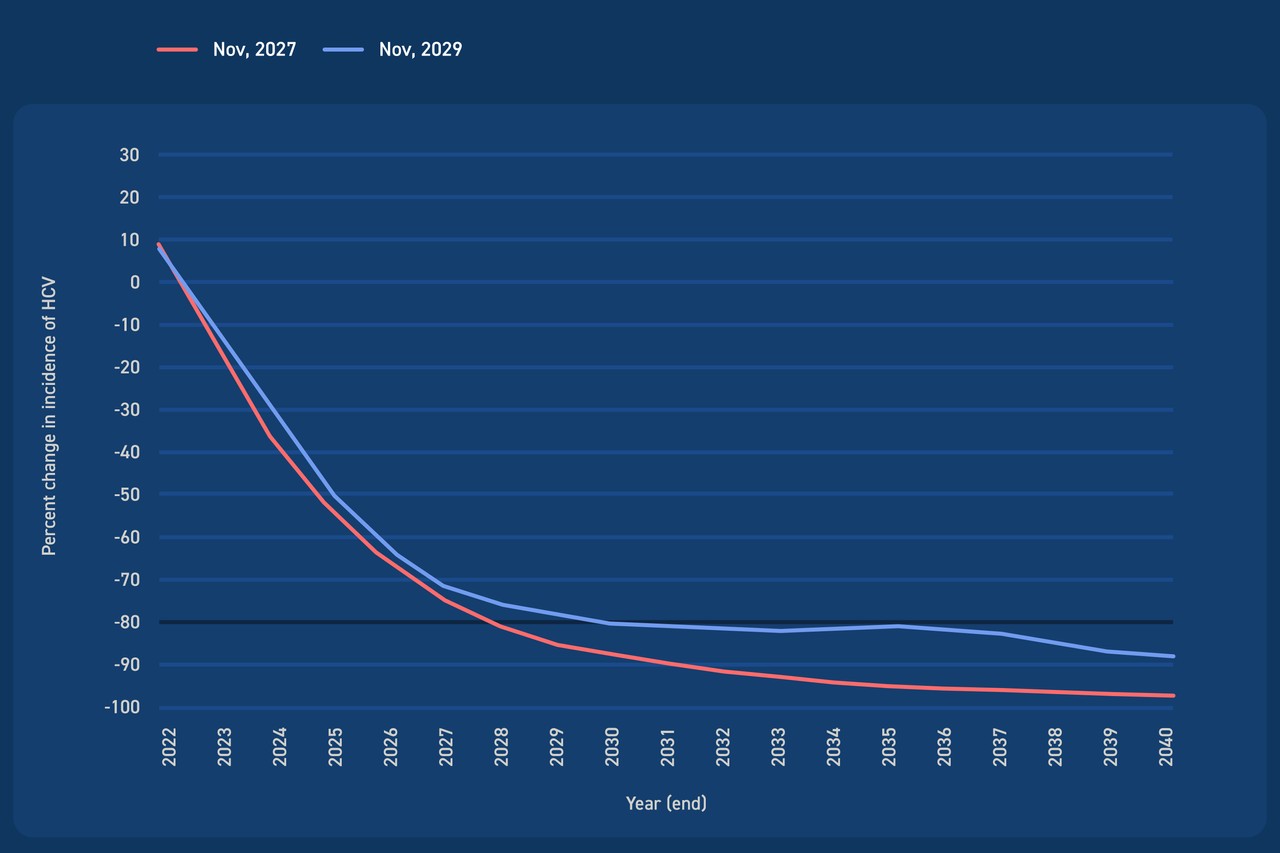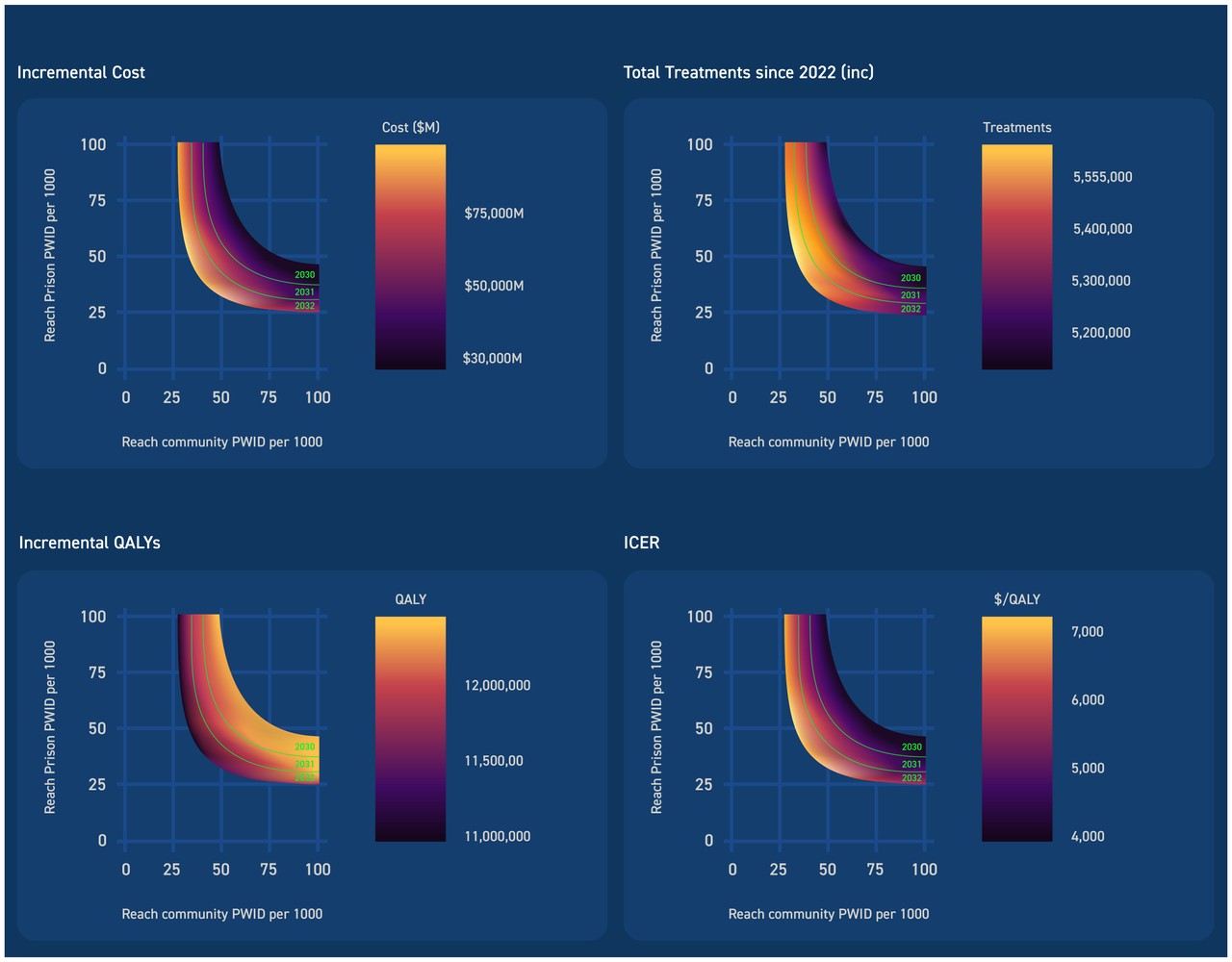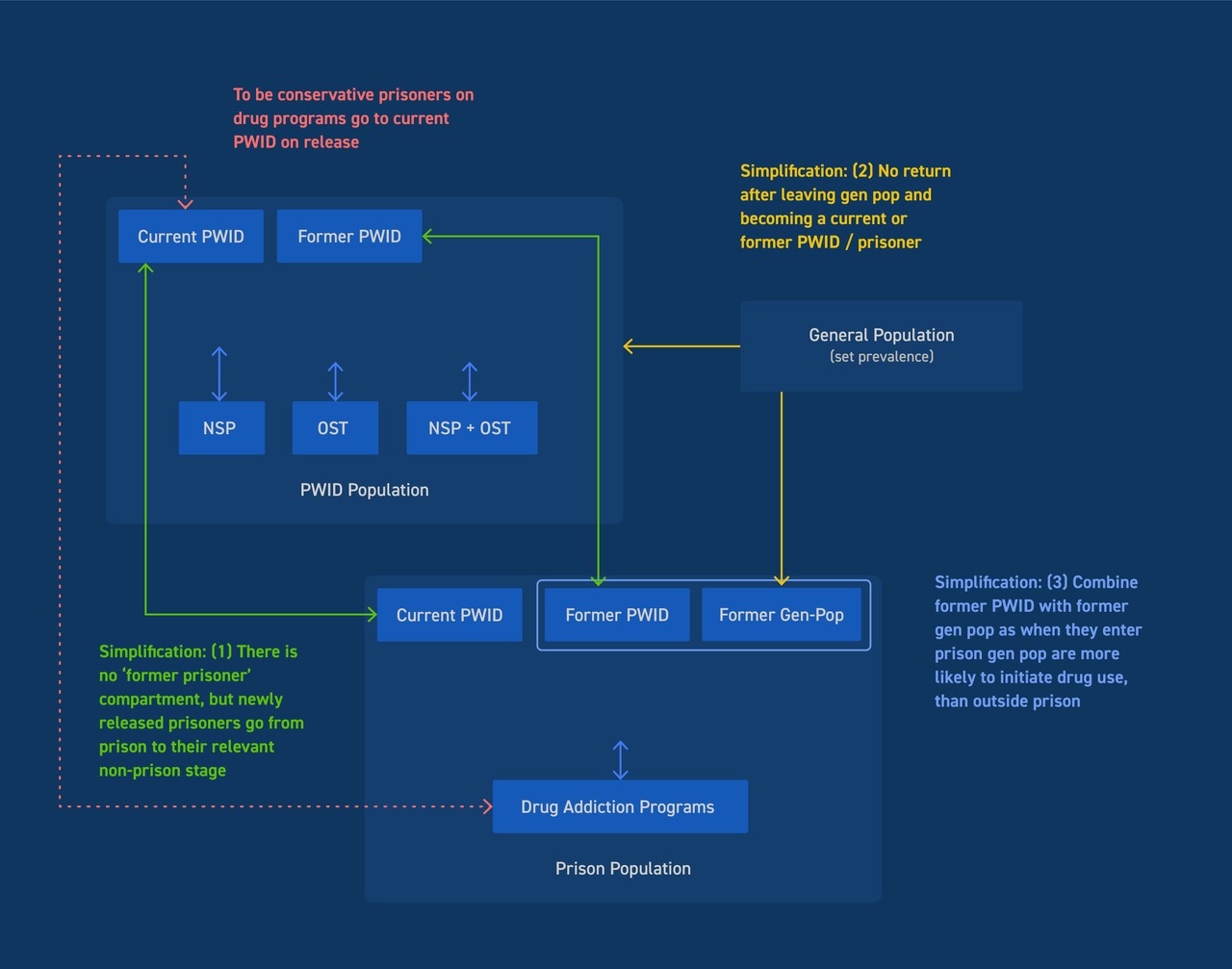Case Study
Developing a dynamic
hepatitis C virus (HCV)
transmission model
that provides real-time estimates of ICER and ROI for spend on targeted HCV treatment strategies
The Question
Standard HCV cost-effectiveness models have largely ignored the value from reducing onwards transmission because they have assumed the patient population to have relatively low transmission risk.
Our client wanted to show that if true group-by-group transmission reduction effects were included, widescale treatment strategies targeted at high-risk groups could be both hugely effective at reducing HCV incidence but could also provide good value for State public health and prison budgets.
The Approach
We developed a dynamic web-based HCV transmission model (based on a validated and published HCV compartment model that we expanded to have multiple- interacting high-risk groups), that enabled field teams to run live estimates of the impact on incidence, disease burden and cost-effectiveness, from targeting prison or persons who inject drugs (PWID) HCV populations with systematic treatment. Importantly it was also able to present key trade-offs for different targeting strategies over extended periods of time.

The Results
We constructed an open deterministic compartmental model of HCV transmission and liver disease progression that incorporates movement of individuals between three groups in real time - general population, PWID and the incarcerated - to estimate absolute infections per year from the present to 2040. Varying levels of treatment reach by subpopulation were considered.

Although not the only solution, our results reveal the optimal strategy for helping reach the WHO incidence elimination goals through treatment reach of 47 per 1000 in PWID and 56 per 1000 in the incarcerated. This would be achieved at a cost of $5,166 (2023 prices) per QALY gained across the period 2023–2040

The Long And
Short Of it
The tool provided key support for our client’s policy team when negotiating with State public health programs and State prison boards to make the case for introducing HCV testing and treatment programs.
Key to this was showing downstream projections of 10-20 years and dynamic changes in required treatment levels for each location based on localized inputs such as length of prison stay and security level.